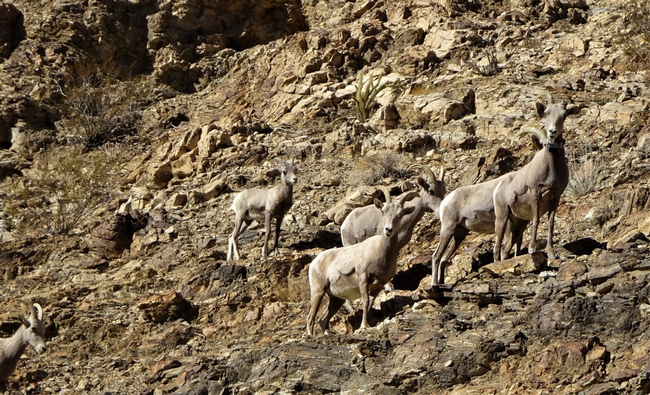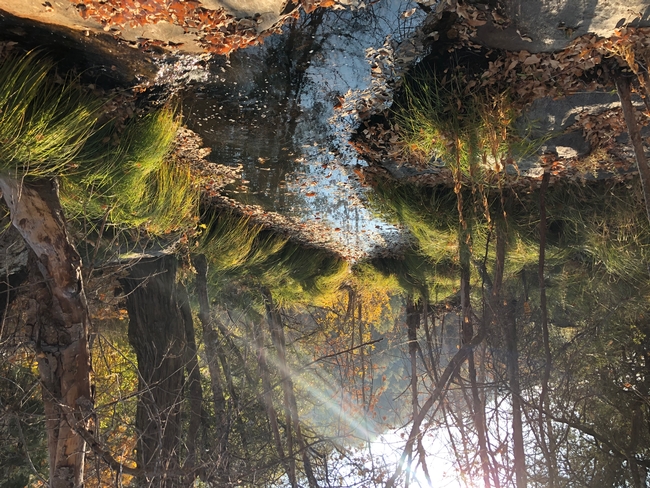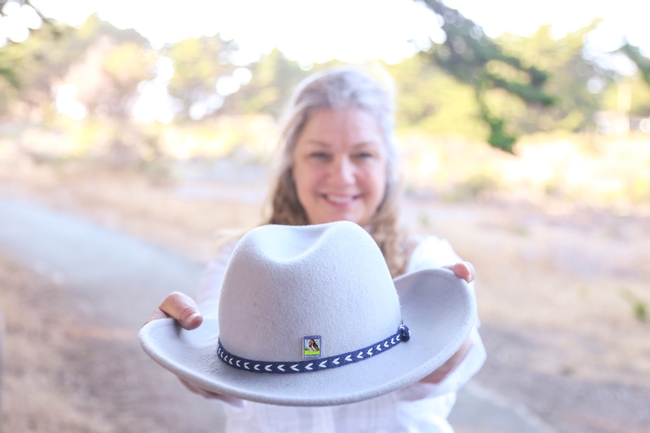- Author: Sabrina L. Drill
The US Global Change Research Program (USGCRP) is hosting a series of public engagement workshops in January and February as part of its Fifth National Climate Assessment “to solicit feedback on climate change-related issues that are important to the public.”
Developing the USGCRP was a key component of the Global Change Research Act of 1990. With representation from 13 federal departments and agencies, the USGCRP's mission is to coordinate “a comprehensive and integrated United States research program which will assist the Nation and the world to understand, assess, predict, and respond to human-induced and natural processes of global change.” Every for years, the Program delivers a National Climate Assessment to congress and the people of the US. From their website, the "NCA is required to a) integrate, evaluate, and interpret the findings of the Program and discuss the scientific uncertainties associated with such findings; b) analyze the effects of global change on the natural environment, agriculture, energy production and use, land and water resources, transportation, human health and welfare, human social systems, and biological diversity; and c) analyze current trends in global change, both human-induced and natural, and project major trends for the subsequent 25 to 100 years."
Work is underway to produce the 5th National Climate Assessment (NCA5).
Thirty public engagement workshops will be held in January and February, beginning January 11th. Workshops are free to attend but registration is required. Each workshop will focus on a different topic or region. Topical sessions are listed below. Go here to see the complete list of Topical and Regional sessions by clicking on NCA5 Engagement Workshops.
February 4 | 10 AM–2:30 PM PT
Southwest (PDF)
January 11 | 12 PM–4 PM ET Human Social Systems (PDF) Register(link is external)
January 11 | 12 PM–4 PM ET
Ecosystems, Ecosystem Services, and Biodiversity (PDF)
January 12 | 12 PM–4 PM ET
Energy Supply, Delivery, and Demand (PDF)
January 18 | 10 AM–2 PM ET
Sector Interactions, Multiple Stressors, and Complex Systems (PDF)
January 18 | 11 AM–3 PM ET
Land Cover and Land-Use Change (PDF)
January 18 | 11 AM–3 PM ET
Air Quality (PDF)
Jan 18 | 12 PM–4 PM ET
Tribal and Indigenous Peoples (PDF)
January 25 | 1 PM–5 PM ETOceans and Marine Resources (PDF)Register(link is external)
January 26 | 12 PM–4 PM ET
Coastal Effects (PDF)
January 28 | 1 PM–5 PM ET
Agriculture, Food Systems, and Rural Communities (PDF)
January 31 | 12 PM–4 PM ET
Economics (PDF)
February 1 | 2 PM –6 PM ET
Transportation (PDF)
February 7 | 11 AM–3:30 PM ET
Adaptation (PDF)
February 7 | 1 PM–5 PM ET
Mitigation (PDF)
February 9 | 10 AM–2 PM ET
Climate Effects on U.S. International Interests (PDF)
February 9 | 12 PM–4 PM ET
Water (PDF)
February 11 | 11:30 AM–3 PM ET
Human Health (PDF)
- Author: Cameron Barrows
A "Natural History Note" From UC California Naturalist's lead scientist, Dr. Cameron Barrows.
“It is that range of biodiversity that we must care for - the whole thing - rather than just one or two stars.” – Sir David Attenborough
That range of biodiversity includes the panoply of life occupying a region. Everything from charismatic species (those one or two stars), bighorn sheep, collared lizards, wolves, and mountain lions, to microscopic soil organisms. Everything from diaphanous-winged butterflies and damselflies to the parasitic wasps that keep insect populations from becoming so numerous that they would otherwise consume all plant life on earth. Everything from towering sequoias to pond scum. Those microscopic soil organisms are essential for helping plants convert inorganic minerals to the building blocks of life and for capture moisture in an ever more arid desert. That pond scum is an organic factory converting sunlight and carbon dioxide to oxygen.
In 1798 Thomas Malthus, an English economist, published an essay on the principle of population growth. Malthus' math was elegant, and its conclusion undeniable. In the absence of factors that limit population growth, populations will grow geometrically until some critical food resource was exhausted and then the population would crash into oblivion. Malthus was thinking humans, but his conclusions are applicable to all species. Arguably no other document was as inspirational to both Charles Darwin and Alfred Russel Wallace for their independent development of the Theory of Natural Selection. Malthus' math was clear; based on any species' reproductive capacity, we should be neck-deep in lizards, spiders, voles, wrens, bighorn sheep and coyotes. Obviously, that is not the case, but from those two conclusions, what the math predicted and what we can see with our own eyes, Darwin and Wallace deduced that species underwent a struggle for existence. That struggle included within and between species competition, avoiding predation, parasitism, disease, and natural disasters. That struggle was real and intense enough that only those individuals that could survive those challenges would ultimately survive and pass their genes on to the next generation. So, species are being subjected to an on-going gauntlet of threats, as are the parasites and viruses and predators, ensuring that species do not reach such numbers that their populations would then crash into oblivion.
Aldo Leopold, in his essay “Thinking like a Mountain”, acknowledged that early on he too fell into the trap of valuing species as “good” or “bad”. “Good” species were those charismatic vegetarians like deer and sheep and squirrels. “Bad” species were non-human carnivores, wolves and coyotes and mountain lions. Leopold, in his early years, sought to rid the rangelands of predators to ensure that deer and other “good” species could proliferate. Proliferate they did, so much so that they ate all the available palatable plants, the forests and rangelands were degraded, and the deer began to die of starvation. It was a mistake people have repeated and continue to repeat to this day. Mountain lions and wolves are now gone from eastern North America, and the deer populations have exploded causing widespread starvation and disease. Not long ago I heard a local bighorn sheep biologist celebrate the death of a mountain lion because it meant more sheep would survive, but he did not include the reality that “his” sheep now face hillsides incrementally devoid of palatable food and flowing springs because of climate change.
A few years back I attended a lecture by a young biologist telling of his efforts to explain to cattle ranchers why their animals were faced with food shortages. The ranchers were convinced that the bison, who shared the grasslands with their cattle, had become too abundant and needed to be “culled”. The biologist patiently explained that, based on his analyses, that the bison and cattle were selecting different plants to eat. The ranchers argued back that the bison must be to blame. The biologist again patiently explained that it was not the bison, it was jackrabbits that were competing with their cattle for food. The ranchers stared is silence, trying to identify where the biologist's analysis and logic had been in error. One of the ranchers finally spoke, not to the biologist but to the other ranchers, and said that perhaps they (the ranchers) had been overzealous in killing coyotes. A healthy coyote population would have kept the jackrabbit population from a Malthusian population trajectory, and so would have left sufficient forage for bison, jackrabbits, and the ranchers' cattle. Attenborough's call for to care for and protect biodiversity, all species (including humans), is the only sane path forward.
At CalNat, we are grateful for the partnerships we've formed with over 55 organizations across the state with whom we share a vision of a more sustainable and just future. This year we are particularly grateful for our new partners that represent several Indigenous cultures across California. We are honored by their choice to work with us and the wisdom they bring to our program.
While our focus is forward looking and hopeful, we'd be remiss not to reflect on our complicated and shared history. We acknowledge the stolen lands we revere, live, and recreate on. We honor the Traditional Ecological Knowledge of Native peoples, the first naturalists, as the foundation of everything we have learned and teach. We stand in allyship with people who experience these aforementioned traumas either generationally or first-hand in the world they navigate now.
Regardless of how you choose to give thanks during this time, whether you share a meal and your gratitude, mourn, protest, or fast…, we hope you will join us as we build more relationships around respect and an appreciation of what we all bring to the table.
- Author: Brook Gamble
We are excited to let all California Naturalists, Climate Stewards, and course partners know that we are nearing the final stages of a big transition to a new and much improved Volunteer Management System! Ever feel a little frustrated with the limitations and service disruptions in our current system? We hear you, we share your frustrations, and we think you'll really like the new system!
We anticipate the Volunteer Management System will be available in mid-February 2022. We have chosen a custom built system developed by Oregon-based Ideal-Logic. There may be up to two weeks of system downtime in early February. We'll provide short training videos and FAQ to assist new users. We believe that users will find the new system more intuitive and robust. For central UC California Naturalist staff and our course partners, the new system will streamline data collection systems, trigger volunteer milestones, and make reporting simpler.
California Naturalists and Climate Stewards that want to receive a 40-hour annual service pin for 2021 will have until January 31 to enter their 2021 volunteer hours in the current system. As with 2020 we have opted to lower the hours requirement to receive a service pin from 40 hours down to 15 to accommodate the safety issues and closures stemming from COVID-19 as well as impacts from another long and destructive wildfire season.
2020 Volunteer pins have arrived but have NOT been sent to individuals. Please look for an email soon from Eliot Freutel describing your delivery options. We know you'll love them, and hope you think they were worth the wait!
Thank you for the work you do to increase the resilience of California's ecosystems and communities. We appreciate you.
- Author: Joy Shindler Rafey
The Alliance of Natural Resource Outreach and Service Programs (ANROSP) conducted the ANROSP Annual Awards Ceremony as part of the organization's 2021 Annual National Conference.
The UC California Naturalist Program was recognized with the 2021 ANROSP Outstanding Educational Materials Award for their UC Climate Stewards curriculum. This award recognizes ANROSP member programs for their development and use of educational materials including print, video, online technology, or other program materials/applications.
Shelly Johnson, ANROSP President with the Florida Master Naturalist Program, said "ANROSP provides member programs an opportunity to share their best work in the areas of Outstanding Educational Materials, Outstanding Volunteer Project, Outstanding Team, Outstanding Program Evaluation and Program of the Year. Each year ANROSP is proud to highlight programs from across the United States in each of these categories." Award applications are peer reviewed and selection is made by the ANROSP Awards Committee, chaired by an ANROSP Board Member.
The Alliance of Natural Resource Outreach and Service Programs is an international network of natural resource programs with the mission of promoting awareness and stewardship of natural resources through science-based education and service programs.
For more information on the UC California Naturalist Program's UC Climate Stewards curriculum, please contact Sarah-Mae Nelson, UC Climate Stewards Academic Coordinator, California Naturalist Program, University of California Division of Agriculture and Natural Resources, at smanelson@ucanr.edu or 408-482-4633.






